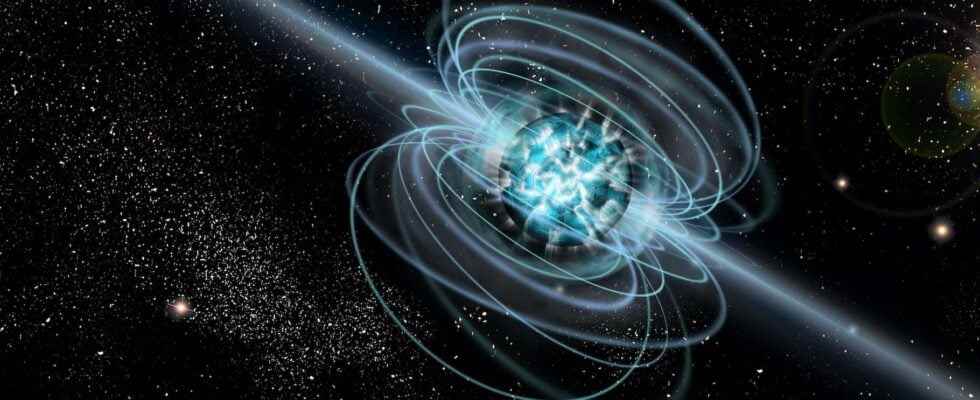Some neutron stars produce extremely energetic flares. Very brief events that are difficult to observe. But astronomers have just recorded crucial information about one of these eruptions. They should help to understand them better.
You will also be interested
[EN VIDÉO] Gamma-ray bursts: collisions of neutron stars illuminate the Universe Gamma-ray bursts are the brightest events in the Universe in the field of electromagnetic waves. One can be observed per day on average on the celestial vault and they occur in distant galaxies. There are two types, short and long. This video explains the nature of short bursts.
The neutron stars are undoubtedly one of the most extraordinary objects of our Universe. They can hold half a million times the mass of our Earth in a diameter of only … twenty kilometers! And from these strange stars stands out an even more astonishing group: that of magnetars. From neutron stars who have a magnetic field extremely intense. Over 1015 Gauss.
The astronomers have identified, for the time being, no more than thirty such magnetars. They undergo violent eruptions that researchers are struggling to study. They occur in a totally unexpected way. And for durations of a tenth of a second only. With an amplitude which therefore merges very quickly with the background noise.
In the final phase of these eruptions, quasi-periodic oscillations at low and high frequencies were observed. And on April 15, 2020, two high-frequency oscillations – more than 2,000 and 4,000 hertz – at the very heart of an event of rare violence – identified as GRB2001415 -, by an instrument on board of the International space station (ISS). “On a neutron star of 1016 Gauss located in another galaxy– NGC 253, some 13 million light years from Milky Way “, comment on researchers. A rash that released a energy equivalent to that which our Sun radiates in 100,000 years. But here in just 160 milliseconds. The analysis of the phenomenon made it possible to estimate that the volume of the eruption was similar, if not greater, than that of the neutron star itself.
Better understand magnetars
According to astronomers, we owe such explosions to instabilities in the magnetosphere neutron stars or some sort of ” earthquake “ in their crust– a rigid and elastic layer of the star about a kilometer thick. Be that as it may, the event must form what the physicists call for Alfvén waves . These waves appear in a plasma – agas ionized at high temperature – immersed in a magnetic field. They interact with each other by dissipating energy.
And the work of researchers now shows that the oscillations detected in the April 2020 eruption are consistent with the episodeproduced by the interaction between Alfvén waves, the energy of which is rapidly absorbed by the crust. What very quickly put an end to the process of magnetic reconnectionand the oscillations detected in GRB2001415. Only 3.5 milliseconds after the main burst.
Astronomers see these results as crucial to understanding how magnetic stresses are produced in and around a neutron star. The continuous monitoring of magnetars in nearby galaxies should therefore help to understand this phenomenon. It could also pave the way for a better understanding ofrapid radio bursts. They are currently among the most enigmatic phenomena in astronomy.
Interested in what you just read?
.
fs3
